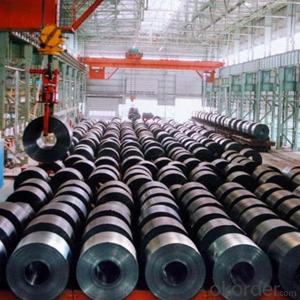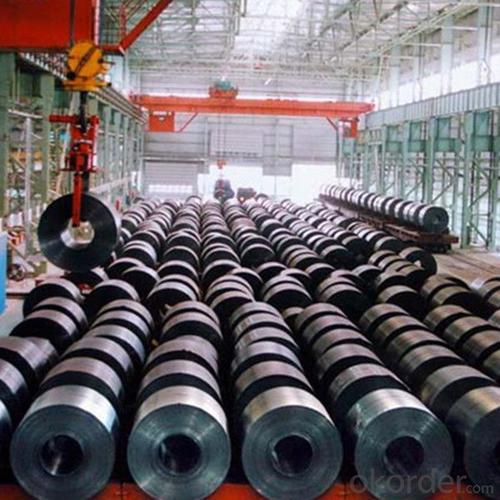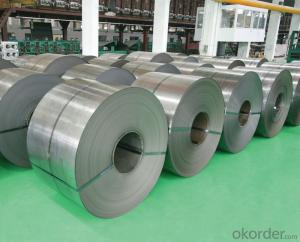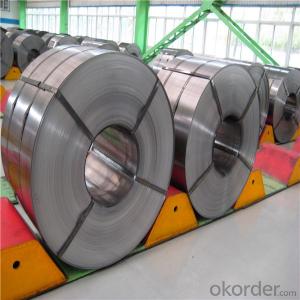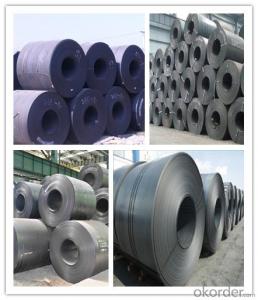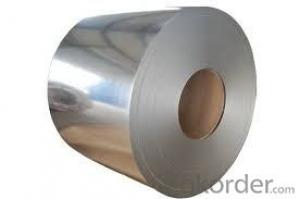Prime Hot Rolled Coil HR Steel Coil Made in China
- Loading Port:
- China main port
- Payment Terms:
- TT OR LC
- Min Order Qty:
- 23 m.t.
- Supply Capability:
- 10000 m.t./month
OKorder Service Pledge
OKorder Financial Service
You Might Also Like
Specification
1.Product Introduction
Product name: Hot rolled steel coil
Material:Q195,Q235,SS400
Thickness: 1.5-50mm
Width: 300-2500mm
Application: construction, household appliance, automobile, light industry, etc
Commodity | Hot rolled steel coil |
Technical Standard: | JIS,GB,DIN,BS,ASTM |
Grade | SS400,Q235,A36,ST-37 |
Width | 600mm to 1500mm |
Thickness | 1.8mm to 20mm |
Surface treatment | Oiled, Bare |
ID coil | 508mm or 610mm |
Coil weight | 3-10 tons as clients's requirements |
Thickness Tolerance | +/-0.15mm |
Width Tolerance | +/-3mm |
Price terms | FOB, CFR ,CIF, CNF |
Packaging Details: | Standard export packing or according to clients required |
delivery time | Within 30 work days after deposit received. |
Payment Terms: | T/T Or L/C at sight |
2.Product Photos
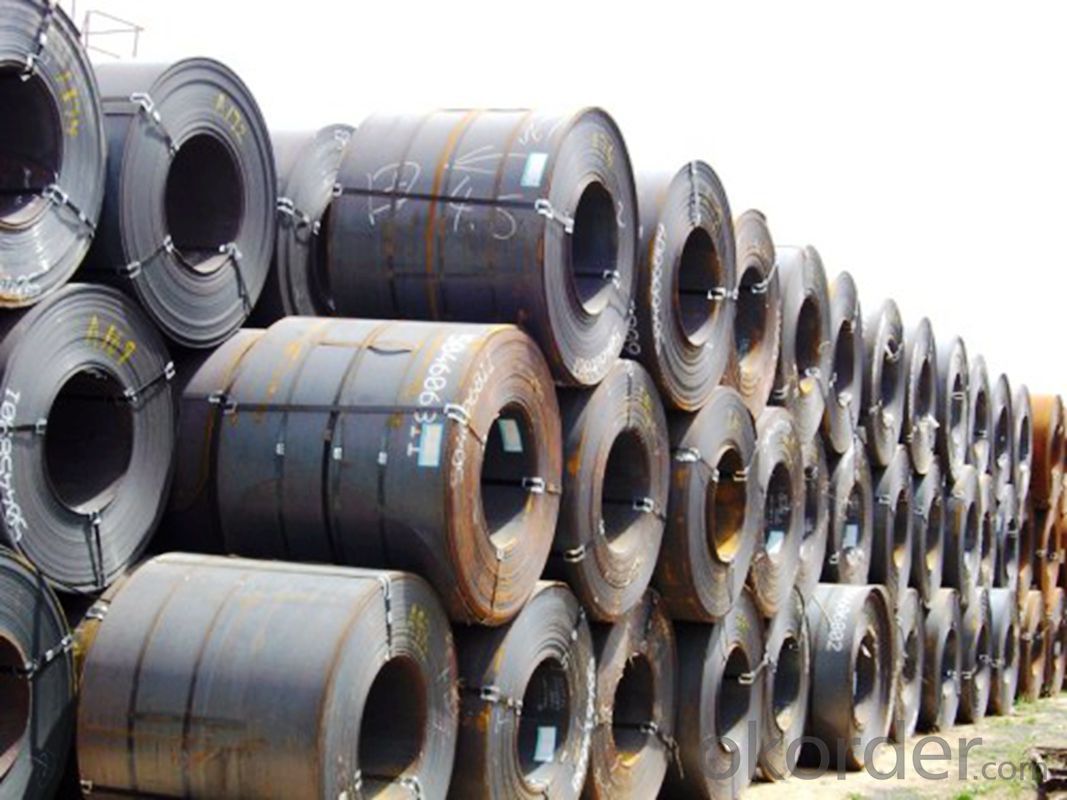
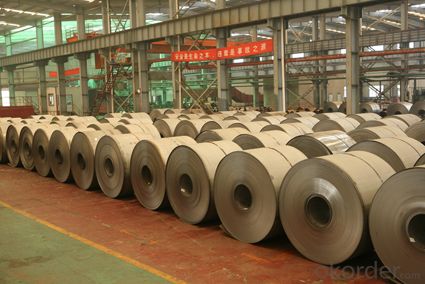
3.Service
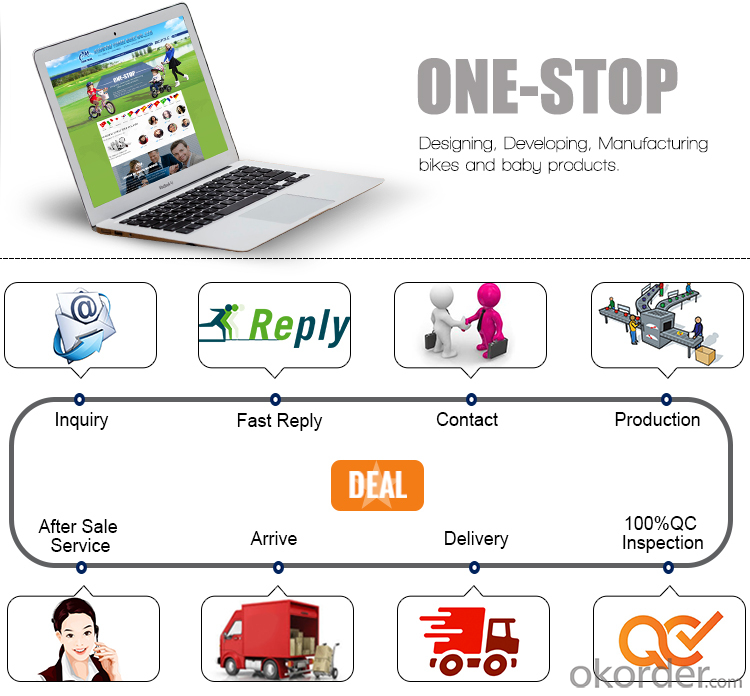
3.FAQ
1. Q: Where is your company located? How can I visit there?
A: Our company is located in Beijing, China. Welcome to visit us.
2. Q: Can I get sample and how long will it take?
A:Yes. We can supply sample. And you need to pay for courier.
3. Q: What's the MOQ?
A: Our MOQ is 25mt.
4. Q: What's the delivery time?
A: It will take about 30 days after TT or L/C.
5. Q: What is the payment terms?
A: T/T, L/C at sight
- Q: How are steel coils used in the manufacturing of household goods?
- Steel coils are used in the manufacturing of household goods in a variety of ways. One common use is in the production of appliances such as refrigerators, washing machines, and ovens. The steel coils are shaped and formed into different parts and components of these appliances, providing strength and durability to the finished product. Additionally, steel coils are often used in the manufacturing of furniture, particularly in the construction of metal frames for chairs, tables, and bed frames. The coils can be bent, welded, or molded into the desired shape, providing a sturdy and reliable foundation for these household items. Furthermore, steel coils are also utilized in the production of kitchen utensils and cookware. The coils can be stamped or pressed into different shapes, such as pots, pans, and cutlery, creating durable and heat-resistant products that are essential for everyday cooking and food preparation. In summary, steel coils play a crucial role in the manufacturing of household goods by providing strength, durability, and versatility to a wide range of products.
- Q: Can steel coils be coated with anti-microbial materials?
- Yes, steel coils can be coated with anti-microbial materials. These coatings are designed to inhibit the growth of microorganisms on the surface, providing added protection against bacterial or fungal contamination.
- Q: What are the different coil slitting line configurations used for steel coils?
- Manufacturers have a range of options when it comes to coil slitting line configurations for steel coils. Each configuration has its own advantages and applications. These configurations are as follows: 1. Simplex Slitting Line: This configuration is suitable for lower production volumes and thinner gauge materials. It utilizes a single slitter head to cut the coil into smaller widths. 2. Loop Slitting Line: Ideal for high-volume production and thicker gauge materials, this configuration features a loop pit that allows for continuous processing without stopping the line. 3. Double Loop Slitting Line: Similar to the loop slitting line, this configuration includes two loop pits, enhancing the line's efficiency and productivity. It is commonly used for processing wider width and thicker gauge materials. 4. Tension Stand Slitting Line: With a tension stand that applies constant tension during the slitting process, this configuration ensures consistent slit widths. It is often used for high-precision slitting applications. 5. Rotary Shear Slitting Line: This configuration utilizes a rotary shear to cut the steel coil into smaller widths. It is suitable for both thin and thick gauges and offers high-speed and accurate cutting. 6. Scrap Winder Slitting Line: This configuration incorporates a scrap winder to collect excess material trimmed during the slitting process. It helps improve efficiency and reduces waste. 7. Combination Slitting Line: Combining multiple slitting processes into a single line, this configuration allows for different slitting methods and widths to be achieved within one setup. It provides flexibility and versatility in processing various steel coil sizes and materials. Manufacturers can choose from these different coil slitting line configurations based on their specific production requirements and the properties of the steel coils they are processing.
- Q: What are the different types of steel coil packaging materials?
- Some common types of steel coil packaging materials include wooden crates, steel frames, plastic strapping, stretch wrap, and steel bands.
- Q: How are steel coils used in the production of steel brackets?
- Steel coils are used in the production of steel brackets as they serve as the primary raw material. The coils are processed through various manufacturing techniques such as cutting, bending, and welding to shape and form the brackets. The high strength and durability of steel coils ensure that the brackets maintain their structural integrity and can withstand heavy loads or harsh conditions.
- Q: How are steel coils used in the production of roofing sheets?
- Roofing sheets cannot be produced without steel coils, as they are an integral part of the manufacturing process. These coils are typically composed of high-quality steel, which is renowned for its strength, durability, and resistance to corrosion. To convert these coils into roofing sheets, several steps must be followed. To begin, the steel coils are loaded onto a machine known as a decoiler. This machine effortlessly unrolls the coils, allowing them to be fed into the production line. By doing so, the decoiler guarantees a continuous supply of steel, ensuring an uninterrupted manufacturing process. Subsequently, the steel coils pass through a series of rollers. These rollers are responsible for molding the steel into the desired shape, which is specific to the type of roofing sheet being produced. Depending on the project's requirements, the rollers can create various profiles, such as corrugated or standing seam. Once the shaping process is complete, the steel sheets often receive a protective coating. This coating, which can be zinc or other metallic alloys, is referred to as galvanized or galvalume coatings, respectively. These coatings provide an extra layer of defense against rust and corrosion. Following the application of the protective coating, the sheets are generally cut to the desired dimensions. This can be achieved using shearing machines or other cutting tools, ensuring that the roofing sheets are appropriately sized for installation. Finally, the roofing sheets are carefully packaged and prepared for transportation to construction sites. They are typically bundled together and securely wrapped to safeguard them during transit. In conclusion, steel coils play a vital role in the production of roofing sheets. Through shaping, coating, cutting, and packaging processes, these coils are transformed into finished products ready for installation. By utilizing steel coils, roofing sheets are rendered strong, durable, and resistant to various environmental factors, making them a popular choice in roofing applications.
- Q: How are steel coils inspected for coil set using deflection measurement?
- Steel coils are commonly inspected for coil set, a condition where the coil exhibits a curvature along its length, by utilizing deflection measurement techniques. Deflection measurement involves applying a force on the coil and measuring the resulting deviation from its original shape. To inspect for coil set, the steel coil is placed on a testing apparatus that can apply controlled pressure to the coil. This apparatus typically consists of a set of rollers or hydraulic cylinders that can exert force on the coil's surface. The first step in the inspection process is to secure the coil in place, ensuring it is properly aligned and centered on the testing apparatus. Once the coil is in position, the apparatus applies a known force along the length of the coil. This force is typically applied in a consistent and controlled manner to ensure accurate measurements. As the force is applied, the deflection of the coil is measured using sensors or gauges positioned at specific points along the length of the coil. These sensors can detect even small deviations from the original shape of the coil. The deflection measurements are recorded and analyzed to determine the severity of coil set. Typically, a set of predetermined acceptance criteria is used to assess the coil's condition. If the recorded deflection measurements exceed these criteria, it indicates the presence of coil set. The severity of the coil set can be determined by comparing the actual deflection measurements with the acceptable range specified by the criteria. Deflection measurement is an effective method for inspecting steel coils for coil set as it provides quantitative data on the deviation from the original shape. This information allows manufacturers to identify and address any coil set issues, ensuring the quality of the steel coils before further processing or shipment to customers.
- Q: What are the different types of steel coil surface treatments?
- The different types of steel coil surface treatments include hot-dip galvanizing, electro-galvanizing, organic coating, and pickling and oiling.
- Q: What are the common coil defects and their causes?
- Some common coil defects include edge wave, center buckle, oil canning, and coil breaks. These defects can occur due to various causes such as improper tension during the coiling process, uneven cooling, material defects, or inadequate lubrication.
- Q: What are the disadvantages of using steel coils?
- One disadvantage of using steel coils is their weight and size, which can make transportation and handling challenging. Additionally, steel coils are susceptible to corrosion, requiring regular maintenance and protective measures to prevent rusting. The production of steel coils also contributes to environmental pollution due to the energy-intensive manufacturing process. Lastly, the upfront cost of steel coils can be relatively high compared to other materials, which may not be suitable for budget-constrained projects.
Send your message to us
Prime Hot Rolled Coil HR Steel Coil Made in China
- Loading Port:
- China main port
- Payment Terms:
- TT OR LC
- Min Order Qty:
- 23 m.t.
- Supply Capability:
- 10000 m.t./month
OKorder Service Pledge
OKorder Financial Service
Similar products
Hot products
Hot Searches
Related keywords
